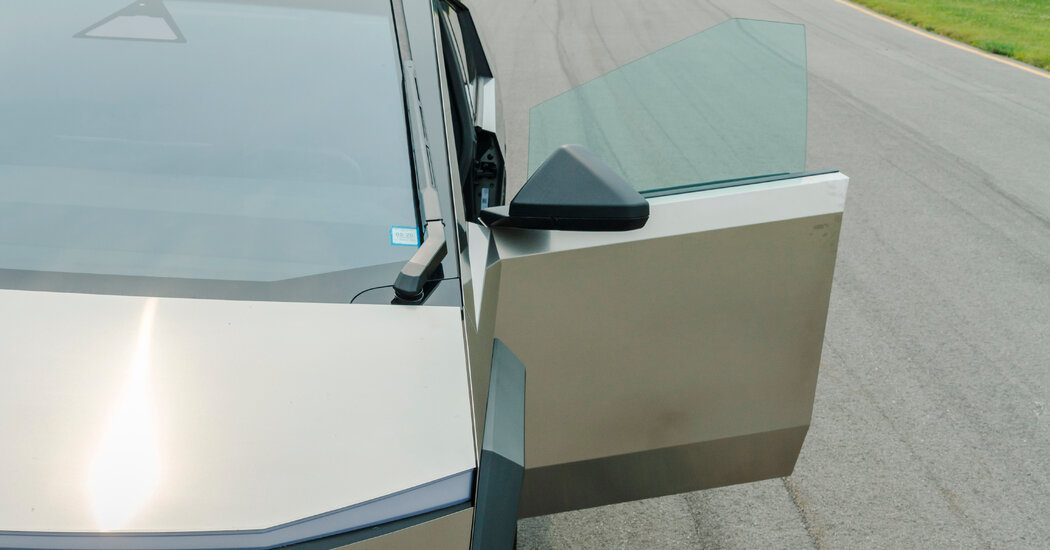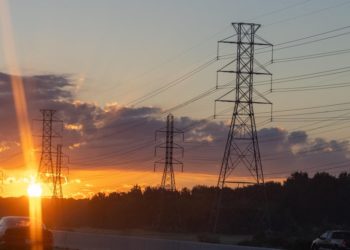The parents of a college student killed in a car crash last year in California sued Tesla on Thursday, claiming that the design of the doors in the company’s Cybertruck pickup made it nearly impossible for their daughter to escape the burning vehicle.
The suit, filed in a California court by the family of Krysta Tsukahara, 19, underlines longstanding questions about how the doors in many Teslas work, which is the focus of an investigation begun in September by federal auto safety regulators. The lawsuit is another setback for the Cybertruck, which has sold poorly and been recalled eight times since last year.
Tesla pioneered car doors that open or shut with the push of a button. Several other automakers have imitated that design, usually on electric models. Electronic doors give cars a high-tech aura and may modestly reduce wind resistance because their exterior handles typically do not protrude from the door.
The automaker’s door latches rely on a 12-volt battery that is separate from the high-voltage battery that drives the vehicle’s electric motor. If the power is cut off by a crash, the electronic door mechanism may not work.
Ms. Tsukahara, a student at the Savannah College of Art and Design in Georgia, was riding in the rear seat of a Cybertruck driven by Soren Dixon that smashed into a tree at high speed in Piedmont, Calif., a San Francisco Bay Area suburb. Mr. Dixon, 19, died in the crash, as did Jack Nelson, 20, a student at the University of Colorado, Boulder, who was a passenger in the rear seat.
The suit claims that Ms. Tsukahara suffered only minor injuries from the crash but died of burns and smoke inhalation after the Cybertruck’s battery caught fire. She was unable to escape because the manual door releases were too difficult to find, the suits says.
Ms. Tsukahara “suffered unimaginable pain and emotional distress” because she could not escape the fire, which ultimately led to her death, according to the suit filed by her parents, Carl and Noelle Tsukahara.
If it had not been so difficult to escape the burning Cybertruck, “she’d be alive today,” Mr. Tsukahara said in an interview at the family’s home in Piedmont.
To open the Cybertruck’s rear doors, the passenger must lift a rubber mat on the bottom of the door’s storage pocket, then pull a cable underneath. The Cybertruck “lacked a functional, accessible, and conspicuous manual door release mechanism, fail-safe, or other redundant system for emergency egress,” the lawsuit says.
A friend who was following in another vehicle saved a fourth passenger who was in the front seat by smashing the Cybertruck’s window with a branch.
The suit threatens another blow to the company’s reputation after a Florida jury decided in August that the company should pay $243 million in damages for a crash involving its driver assistance system. The jury found that the company’s software had contributed to an accident in 2019 that killed one person and severely injured another.
Tesla did not respond to requests for comment this week and did not respond to a request for comment after the suit was filed.
In the Piedmont case, Tesla may seek to place blame for the crash on Mr. Dixon, the driver of the Cybertruck. He was drunk and had consumed cocaine and amphetamines that night, according to a coroner’s report. The company may also argue that the doors might not have opened because of damage to the Cybertruck’s body, rather than flaws in the company’s design.
Electric vehicles are far less likely to catch fire than cars that run on gasoline. But when the batteries do ignite, they burn intensely, and the flames can quickly envelop cars, requiring quick escapes or rescues.
Tesla is working on new designs that will make it easier to open doors if a vehicle loses power, Franz von Holzhausen, Tesla’s chief designer, said in September on Bloomberg’s “Hot Pursuit” podcast.
“That’s something we are working on, and it’s in the car soon,” Mr. von Holzhausen said on the podcast.
The Tsukaharas’ lawsuit claims that deadly flaws in the design of the door latches have been obvious for years, yet Tesla failed to make improvements even in the Cybertruck, its newest vehicle.
“For more than a decade before the crash,” their suit says, “Tesla had repeated and direct notice that its reliance on electronic door systems created a serious risk of entrapment. Owners, bystanders, and first responders documented instances where Tesla occupants survived crash forces but could not escape when electrical power failed and fire ensued.”
Last year, Tesla settled a suit brought by the family of Kevin McCarthy, the chief executive of a software firm in Indiana, who died after a Tesla Model S driven by one of his employees struck a tree and caught fire.
The driver died on impact in that crash, which was in 2016 in Indianapolis. But witnesses reported seeing Mr. McCarthy struggling to get out of the front passenger side of the car before it was engulfed in flames.
“Ours is not an isolated case,” said Mr. Tsukahara, who is represented by Roger Dreyer of the Sacramento firm of Dreyer Babich Buccola Wood Campora. “This company is worth a trillion dollars,” Mr. Tsukahara added, referring to Tesla. “How can you release a machine that’s not safe in so many ways?”
Tesla doors are the focus of an investigation opened in September by federal regulators. The National Highway Traffic Safety Administration is examining 2021 Tesla Model Y sport utility vehicles after owners complained that, after leaving the front seats and getting out of the car, they were unable to open the rear doors. In four cases, owners reported that they had to break the cars’ windows to free children trapped inside.
Other manufacturers, including Ford Motor, Toyota and Stellantis, the maker of Jeep vehicles, have adopted electronic doors. Those companies have used various designs that allow doors to be opened in the event of a power failure or emergency.
Electronic door handles on some Lexus models operate manually by being pulled twice, and there is a manual release tab on the exterior handle. The handles on Volkswagen’s electric ID.4 operate manually if simply pulled harder.
On Ford’s electric Mustang Mach E and some Jeep models, electronic doors have a capacitor near the door mechanism that retains enough power for it to open in case of a battery failure, according to the companies.
The Piedmont crash shattered the bedroom community set in hills above Oakland, where streets wind past ranch homes with carefully landscaped yards, many with Teslas parked out front.
Mr. Tsukahara said, “Our life is never going to be the same, and there are other families just like us.”
Jack Ewing covers the auto industry for The Times, with an emphasis on electric vehicles.
The post Tesla Is Sued by Family Who Says Faulty Doors Led to Daughter’s Death appeared first on New York Times.




